
Dr. Mohammad Mahfuzul Haque
Professor
Office Address:
Department of Biotechnology,
Jamia Millia Islamia (Central University),
New Delhi 110025
Professional Appointments
2017-present: |
Professor, Department of Biotechnology, JMI, New Delhi |
Sep 2017-2020 |
Head, Department of Biotechnology, JMI, New Delhi |
2014- 2017 |
Faculty of Molecular Medicine, Lerner College of Medicine, Case Western Reserve University, Cleveland, Ohio, USA |
2012-2017 |
Staff Project Scientist, Department of Pathobiology, Cleveland Clinic, Cleveland, OH, USA |
2006-2012 |
Staff, Department of Pathobiology, Lerner Research Institute, Cleveland Clinic, Cleveland, OH, USA |
2001-2004 |
Lecturer (Guest Faculty), Department of Biosciences, JMI, New Delhi |
1997-1998 |
Lecturer (adhoc), Department of Biosciences, JMI, New Delhi |
1996-1998 |
Visiting Faculty (honorary), F/o Pharmacy, Jamia Hamdard, New Delhi. |
2004-2017 |
Part of three RO1 and 2PPG grants funded by National Institutes of Health (NIH), USA |
Administrative responsibilities at the University level
2019-Present |
Member of Court (Anjuman), Jamia Millia Islamia, New Delhi |
Sep 2017-2020 |
Chairman, Board of studies, Department of Biotechnology, JMI, New Delhi |
Sep 2017-2020 |
Chairman, DRC, Department of Biotechnology, JMI, New Delhi |
Oct 2020-present |
Member, BOS, Department of Mathematics, JMI, New Delhi |
Jan 2021-present |
External Member, Board of Studies, Department of Biochemistry, School of Chemical & Life Sciences, Jamia Hamdard, New Delhi |
Jan 2018-2021 |
Member, BOS, Department of Biosciences, JMI, New Delhi |
Oct 2017-present |
VC nominee, CRC, Centre for Physiotherapy and Rehabilitation Sciences, JMI |
May 2018-Present |
External Member, BOS, Department of Biotechnology, BBAU Central University, Lucknow, UP |
2018-Present |
Member, DRC, Faculty of Pharmacy, Hamdard University, New Delhi |
2017-2020 |
Superintendent of Semester Examinations of Department of Biotechnology |
June 2019 |
Centre Superintendent, Ramanujan Block, Entrance Tests of JMI |
May 2018 |
Observer for Entrance Test(s), JMI, Centre Patna, Bihar |
July 2019 |
Observer for Entrance Test(s), JMI, Centre Trivandrum, Kerala |
July 2019 |
Observer for Entrance Test(s), JMI, Centre RK Puram, New Delhi |
July 2018-Present |
Member/Expert at Centre for Coaching and Career Planning (RCA), JMI for UPSC and other competitive examinations |
2019-Present |
Member, Animal House Facility, JMI, New Delhi |
Research Experiences
2017-present: |
Professor, Department of Biotechnology, JMI, New Delhi |
2012-2017: |
Staff Project Scientist, Department of Pathobiology, Cleveland Clinic, Cleveland, OH, USA |
2009-2012: |
Staff, Department of Pathobiology, Lerner Research Institute, Cleveland Clinic, Cleveland, OH, USA |
2004-2009: |
Postdoctoral Research Fellow and RA, Departments of Pathobiology and Immunology, LRI, Cleveland Clinic, Cleveland, OH, USA |
2002-2004 |
Post PhD research, Enzyme Kinetics Lab, Biosciences, JMI |
Education, Training & Fellowship
2003 |
Ph.D., Biosciences (Biophysical Chemistry), JMI, New Delhi (thesis submitted in 2002) |
1995 |
M.Sc. Biosciences, JMI, New Delhi (First division with distinction First position in University, Gold medalist) |
1993 |
B.Sc. Biosciences, JMI, New Delhi (First division with distinction, third position in University) |
2004-2009 |
Postdoctoral Research Fellow and RA, Departments of Immunology and Pathobiology, Lerner Research Institute, Cleveland Clinic, Cleveland, USA |
2002-2004 |
Post PhD research, Enzyme Kinetics Lab, JMI |
Dec 1994& Jun 1996 |
JRF+NET (CSIR-UGC) |
1995 |
GATE 95 |
1995-1997 |
Junior Research Fellow (CSIR- UGC), Department of Biosciences, JMI |
1997-2000 |
Senior Research Fellow (CSIR- UGC), Department of Biosciences, JMI |
Lab Members : Ph.D. Guidance
Ph.D. Students (Under my supervision)

Dr. Mohamed Shiffa
Ph.D. Scholar (Unani Medicine): 2018-Present

Seerat Siraj (ICMR-SRF)
Ph.D. Scholar: August 2018- Present

Daraksha Yameen(CSIR-JRF)
Ph.D. Scholar: February 2019-present

Aanchal Rathi (UGC Fellow)
Ph.D. Scholar: October2019-Present

Mohammad Masood (MN-JRF)
Ph.D. Scholar: August 2021- Present
Ph.D. Student (Under Co-supervision)

Zainab Mirza (UGC Fellow)
Ph.D. Scholar: December 2017- Present
Student under Research Project

Faizya Khan (DST- SERB CRG)
Research Assistant: March 2020 - Present
Photo Gallery: Medical Biotechnology Laboratory
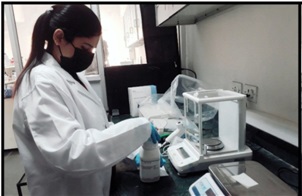
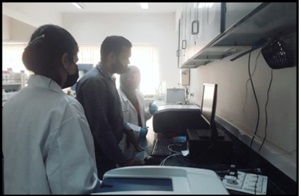
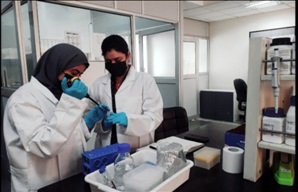
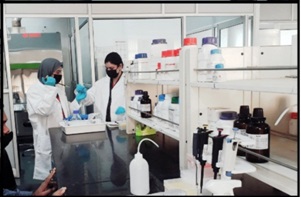
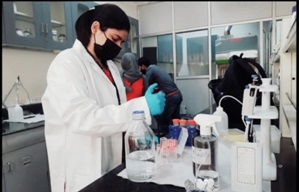

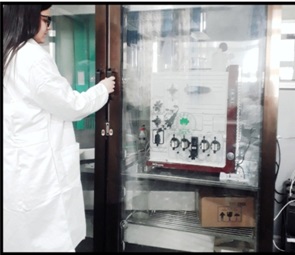

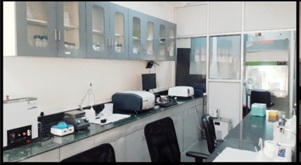
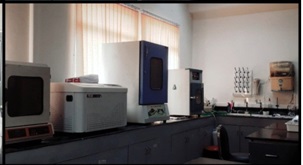

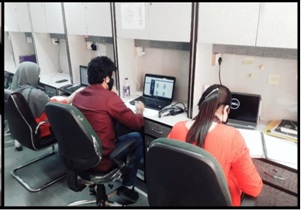 ×
×












Research Overview
Our research is in the area of Molecular Enzymology - i.e. the characterization of structure, function and mechanism of enzymes with important biological and/or biotechnological roles. We have particular interest in the analysis of cofactor-binding proteins; particularly flavoproteins and flavoheme enzymes. Much of our research involves studies on mammalian proteins, including Nitric Oxide Synthases (NOSs), Methionine Synthase Reductase (MSR), and Cytochrome P450 reductases (CPR). Flavoproteins represent 1%–3% of all proteins present in prokaryotic and eukaryotic genomes and about half of the proteins involved in electron transfer. In addition, the scope of work extends to learning how other cellular proteins can control activity of redox enzymes like NOSs and CPR, to cite a few. We are also interested in a membrane-associated enzyme NADPH oxidase (NOX) that catalyzes the production of superoxide.
Nitric Oxide (NO) is synthesized by NOS enzymes from L-arginine. They are calmodulin (CaM)-activated flavoheme enzymes contain connected NADPH-FAD (FNR), FMN, and NOSoxy domains that create a mini-electron transport chain to transfer NADPH-derived electrons to the heme and tetrahydrobiopterin (H4B) groups in the NOSoxy domain. These electron transfers enable O2 activation by the heme, an essential prerequisite for NO synthesis. The timing and rates of the electron transfers must be tightly regulated for NOS to generate and release NO while minimizing uncoupled NADPH oxidation and release of reactive oxygen species.
Area of research:
- Understanding How Structure Controls Electron Transfer and Regulates Catalytic activity in Nitric Oxide Synthases (NOSs), Cytochrome P450 Reductase (CPR), Methionine Synthase Reductase (MSR) and related redox enzymes.
- Domain-domain interaction studies in the NOS enzymes and regulation of Intramolecular electron transfer.
- To develop novel strategies to tailor and correct NO production in cardiovascular and other diseases.
- Understanding role of NO and NOSs in Asthma and Pulmonary Hypertension.
- Investigating the mechanisms that control electron transfer between enzyme redox centers.
- Investigating the mechanisms of electron transfer and Catalysis in Biomedically important flavoproteins and their role in human diseases.
- Development and evaluation of lipid nanocarrier for Nitric Oxide Synthase delivery.
Research Projects
As Principal Investigator
- DST-SERB-CRG: ~54 Lakhs (2019-2022)
- ICMR EMR grant: ~48 Lakhs (2020-2023)
As Co-Principal Investigator
- SPARC- MHRD: ~57 lakhs (2019-2021)
- ICMR EMR grant: ~40 Lakhs (2020-2023)
Research Publications, Reviews & Book Chapters (Selected)
|
|
Conformational States and Fluctuations in Endothelial Nitric Oxide Synthase under Calmodulin Regulation (2021) Biophysical Journal. (In press) I.F. ~4.03 |
|
|
Therapeutic targeting of PIM KINASE signalling in cancer therapy:Structural and clinical prospects (2021) Biochim Biophys Acta Gen. Nov;1865(11):129995. I.F. ~3.8 |
|
|
Specific O-GlcNAc modification at Ser-615 modulates eNOS function. (2020) Redox Biology. Sep;36:101625. I.F. ~11.8 |
|
|
Unbiased Proteomics Identifies Plasminogen Activator inhibitor-1 as a Negative Regulator of Endothelial Nitric Oxide Synthase. (2020) Proc Natl Acad Sci U S A. (PNAS) Apr 28;117(17):9497-9507. I.F. ~11.2 |
|
|
Tyrosine Nitration on Calmodulin Enhances Calcium-Dependent Association and Activation of Nitric-Oxide Synthase. (2020) J. Biol. Chem. Feb 21;295(8):2203-2211. I.F. ~5.16 |
|
|
Effect of Nerolidol on Cyclophosphamide-Induced Bone Marrow and Hematologic Toxicity in Swiss Albino Mice. (2020) Experimental Hematology, Volume 82, Pages 24-32. I.F. ~3.1 |
|
|
Nerolidol protects the liver against cyclophosphamide-induced hepatic inflammation, apoptosis, and fibrosis via modulation of Nrf2, NF-κB p65, and caspase-3 signaling molecules in Swiss albino mice. (2020) BioFactors. 1–11. I.F. ~6.1 |
|
|
Heat shock protein 90 regulates soluble guanylyl cyclase maturation by a dual mechanism. (2019) J. Biol. Chem. Aug 30;294(35):12880-12891. I.F. ~5.16 |
|
|
Nitric oxide synthase enzymology in the 20 years after the Nobel Prize. (2019) Br J Pharmacol. Jan;176(2):177-188. Special Invited review for special edition on NOS enzymes edited by Nobel Laureate Louis J. Ignarro. I.F. ~8.74 |
|
|
Glyceraldehyde-3-phosphate dehydrogenase is a chaperone that allocates labile heme in cells. (2018) J. Biol. Chem. Sep 14;293:14557-68. I.F. ~5.16 |
|
|
A cross-domain charge interaction governs the activity of NO synthase. (2018) J. Biol. Chem. Mar 23;293:4545-54. I.F. ~5.16 |
|
|
Endothelial nitric oxide synthase oxygenase on lipid nanodiscs: A nano-assembly reflecting native-like function of eNOS. (2017) Biochem Biophys Res Commun. Dec 2;493(4):1438-1442. I.F. ~3.6 |
|
|
Restricting the Conformational Freedom of the Neuronal Nitric Oxide Synthase Flavoprotein Domain Reveals Impact on Electron Transfer and Catalysis. (2017) J. Biol. Chem. 292: 6753-6764. I.F. ~5.16 |
|
|
Phosphorylation Controls Endothelial Nitric-oxide Synthase by Regulating Its Conformational Dynamics. (2016) J. Biol. Chem. 291:23047-57. I.F. ~5.16 |
|
|
Engineering nitric oxide synthase chimeras to function as NO dioxygenases. (2016) J. Inorg Biochem., 158: 122-30. I.F. ~4.15 |
|
|
Tetrahydrobiopterin redox cycling in nitric oxide synthase: evidence supports a through-heme electron delivery. (2016) FEBS Journal, 283(24):4491-4501. I.F. ~5.55 |
|
|
Mutants of Cytochrome P450 Reductase Lacking Either Gly-141 or Gly-143 Destabilize Its FMN Semiquinone. (2016) J. Biol. Chem. 291(28):14639-61. I.F. ~5.16 |
|
|
Phosphorylation inactivation of endothelial nitric oxide synthesis in pulmonary arterial hypertension. (2016) Am J Physiol Lung Cell Mol Physiol. Jun 1;310(11):L1199-205. I.F. ~5.46 |
|
|
Single-molecule spectroscopy reveals how calmodulin activates NO synthase by controlling its conformational fluctuation dynamics. (2015) Proc Natl Acad Sci U S A. (PNAS), 112(38):11835-40. I.F. ~11.2 |
|
|
Heat Shock Protein 90 Associates with the Per-Arnt-Sim Domain of Heme-free Soluble Guanylate Cyclase: Implications for Enzyme Maturation. (2015) J. Biol. Chem., 290(35):21615-28. I.F. ~5.16 |
|
|
Dissecting structural and electronic effects in inducible nitric oxide synthase. (2015) Biochemical Journal, 467: 153-165. I.F. ~3.9 |
|
|
Distinct Conformational Behaviors of Four Mammalian Dual-Flavin Reductases (Cytochrome P450 Reductase, Methionine Synthase Reductase, Neuronal Nitric Oxide Synthase, Endothelial Nitric Oxide Synthase) Determine their Unique Catalytic Profiles. (2014) FEBS Journal, 281: 5325-40. I.F. ~5.55 |
|
|
Thermodynamic Characterization of Five Key Kinetic Parameters that Define Neuronal Nitric Oxide Synthase Catalysis. (2013) FEBS Journal, 280: 4439-53. I.F. ~5.55 |
|
|
Mechanism of Inducible Nitric-Oxide Synthase Dimerization Inhibition by Novel Pyrimidine Imidazoles. (2013) J. Biol. Chem., 288: 19685-97. I.F. ~5.16 |
|
|
Charge Pairing Interactions Control the Conformational Setpoint and Motions of the FMN Domain in Neuronal Nitric Oxide Synthase. (2013) Biochemical Journal, 450:607-17. I.F. ~3.9 |
|
|
Control of electron transfer and catalysis in neuronal NOS by a Hinge connecting its FMN and FAD-NADPH domains. (2012) J. Biol. Chem., 287: 30105-16. I.F. ~5.16 |
|
|
Arg375 tunes tetrahydrobiopterin functions and modulates catalysis by inducible nitric oxide synthase. (2012) J. Inorg Biochem., 108: 203-15. I.F. ~4.15 |
|
|
A kinetic model linking protein conformational motions, interflavin electron transfer and electron flux through a dual-flavin enzyme-simulating the reductase activity of the endothelial and neuronal nitric oxide synthase flavoprotein. (2011) FEBS Journal, 278: 4055-69. I.F. ~5.55 |
|
|
Mesoheme-substitution reveals how heme electronic properties can influence the kinetic and catalytic parameters of neuronal NO synthase. (2011) Biochemical Journal, 433:163-174. I.F. ~3.9 |
|
|
A Bridging Interaction allows Calmodulin to Activate NO Synthase through a Bi-Modal Mechanism. (2010) J. Biol. Chem., 285: 25941-9. I.F. ~5.16 |
|
|
Nitric oxide blocks cellular heme insertion into a broad range of heme proteins. (2010) Free Radical Biology & Medicine (FRBM), 48:1548-58. I.F. ~7.4 |
|
|
Lys842 in neuronal nitric-oxide synthase enables the autoinhibitory insert to antagonize calmodulin binding, increase FMN shielding, and suppress interflavin electron transfer. (2010) J. Biol. Chem., 285: 3064-3075. I.F. ~5.16 |
|
|
Neutralizing a Surface Charge on the FMN Subdomain Increases the Activity of Neuronal Nitric-oxide Synthase by Enhancing the Oxygen Reactivity of the Enzyme Heme-Nitric Oxide Complex. (2009) J. Biol. Chem., 284: 19237-19247. I.F. ~5.16 |
|
|
Structural and Mechanistic Aspects of Flavoproteins: Electron transfer through the nitric oxide synthase flavoprotein domain. Review Article, (2009) FEBS Journal, 276: 3959-3974. I.F. ~5.55 |
|
|
Pre-steady state kinetics of ATP hydrolysis by Na,K-ATPase. (2009) Cell Biochemistry and Function, 27: 135-41. I.F. ~3.7 |
|
|
Stabilization and characterization of a heme-oxy reaction intermediate in inducible nitric oxide synthase. (2008) J. Biol. Chem., 283: 33498-34507. I.F. ~5.16 |
|
|
A connecting hinge represses the activity of endothelial nitric oxide synthase. (2007) Proc Natl Acad Sci U S A. (PNAS), 104: 9254-9259. I.F. ~11.2 |
|
|
Glucose regulation of pre-steady state kinetics of ATP hydrolysis by Na,K-ATPase. (2007) Acta Biochim Biophys, 39: 583-590. I.F. ~3.9 |
|
|
Reductase domain of Drosophila melanogaster nitric-oxide synthase: redox transformations, regulation, and similarity to mammalian homologues. (2007) Biochemistry, USA, 46: 11865-11873. I.F. ~3.16 |
|
|
Surface Charge Interactions of the FMN Module Govern Catalysis by Nitric-oxide Synthase. (2006) J. Biol. Chem., 281: 36819- 6827. I.F. ~5.16 |
Abstracts in Peer Reviewed Journals (Selected)
Nitric Oxide (I.F. ~4.4). Vol. 42, Pg 107. |
FASEB J (I.F. ~5.2). 28:768.8. |
|
|
Nitric Oxide (I.F. ~4.4). Vol. 42, Pg 138-139. |
|
|
|
FASEB J (I.F. ~5.2). 27:790.14. |
|
|
|
|
FASEB J (I.F. ~5.2). 23:890.1. |
FASEB J (I.F. ~5.2). 20:A473. |
|
